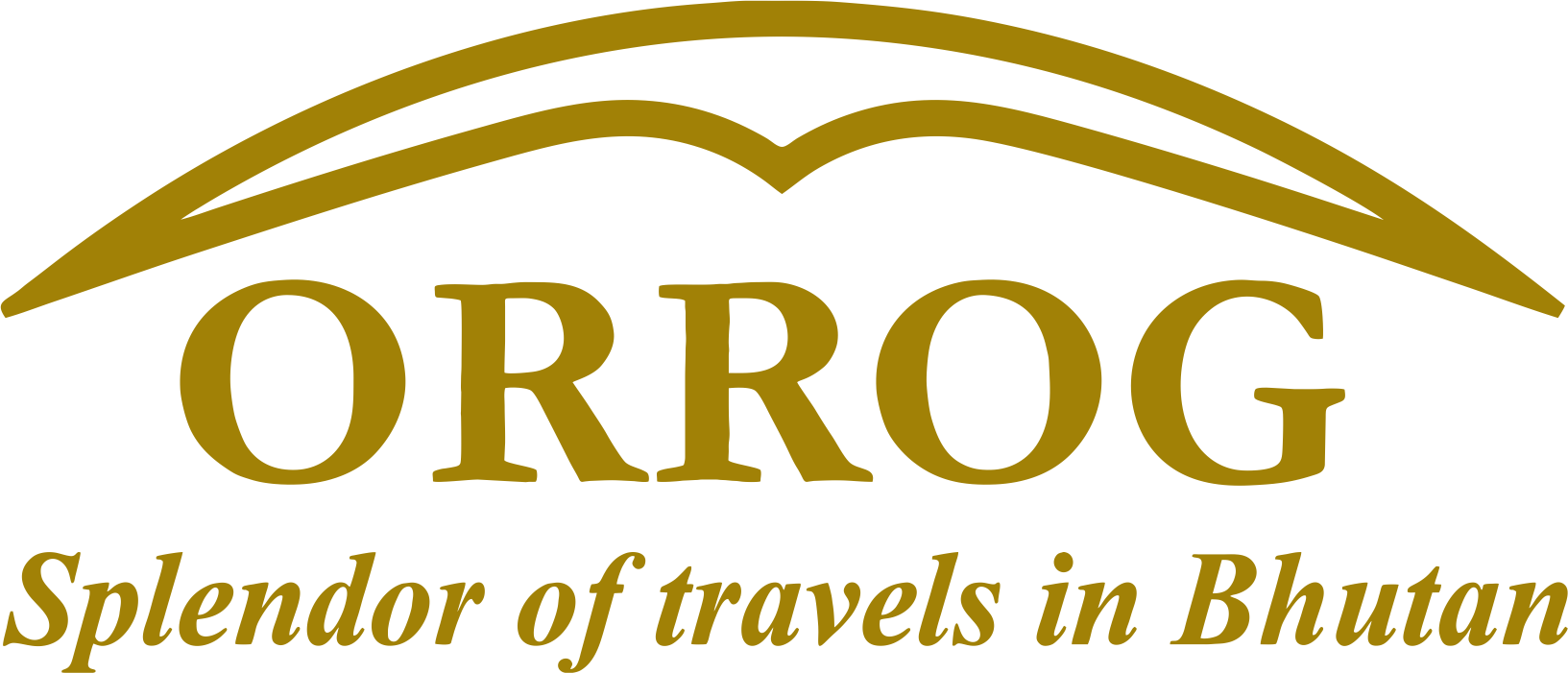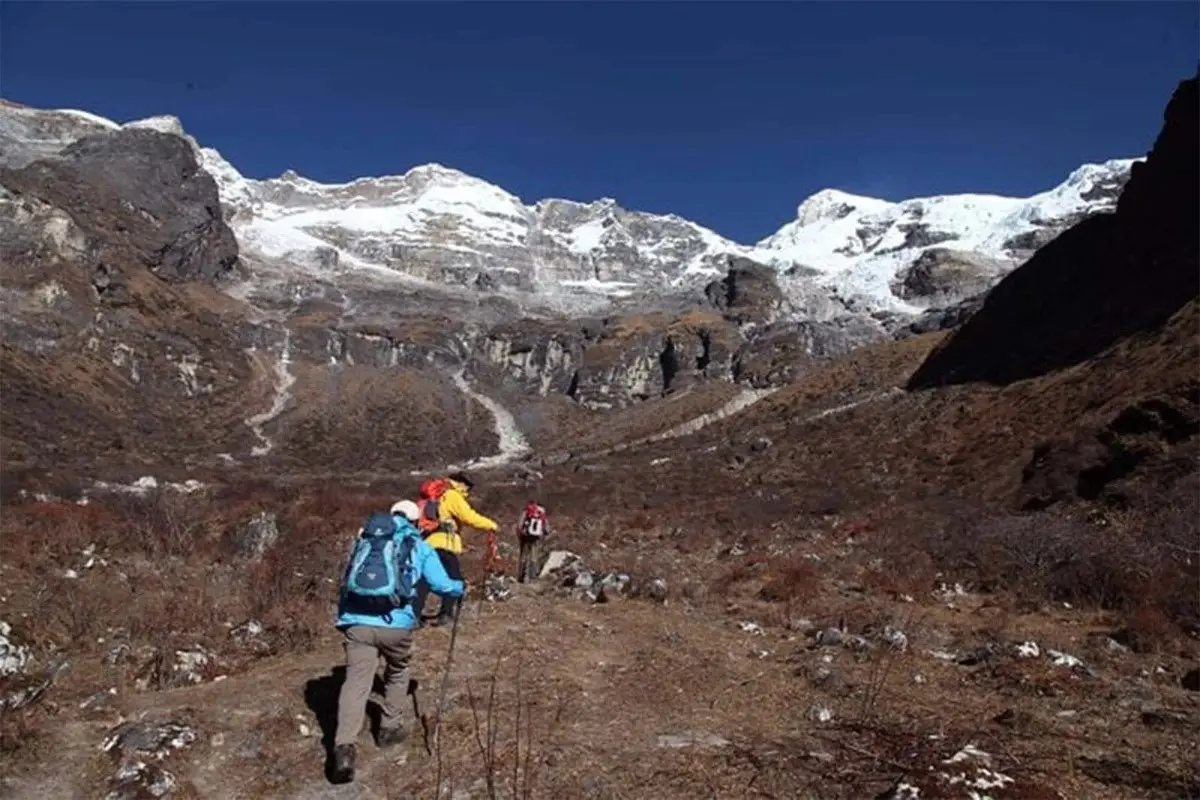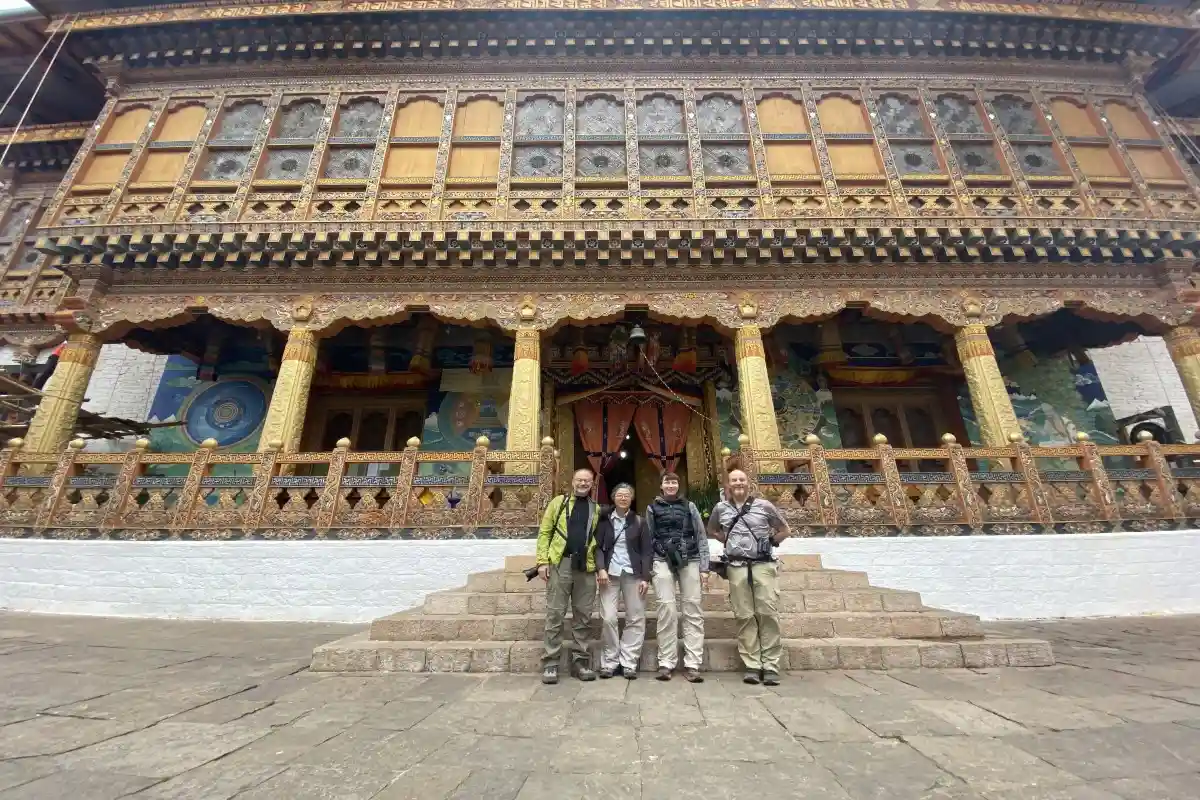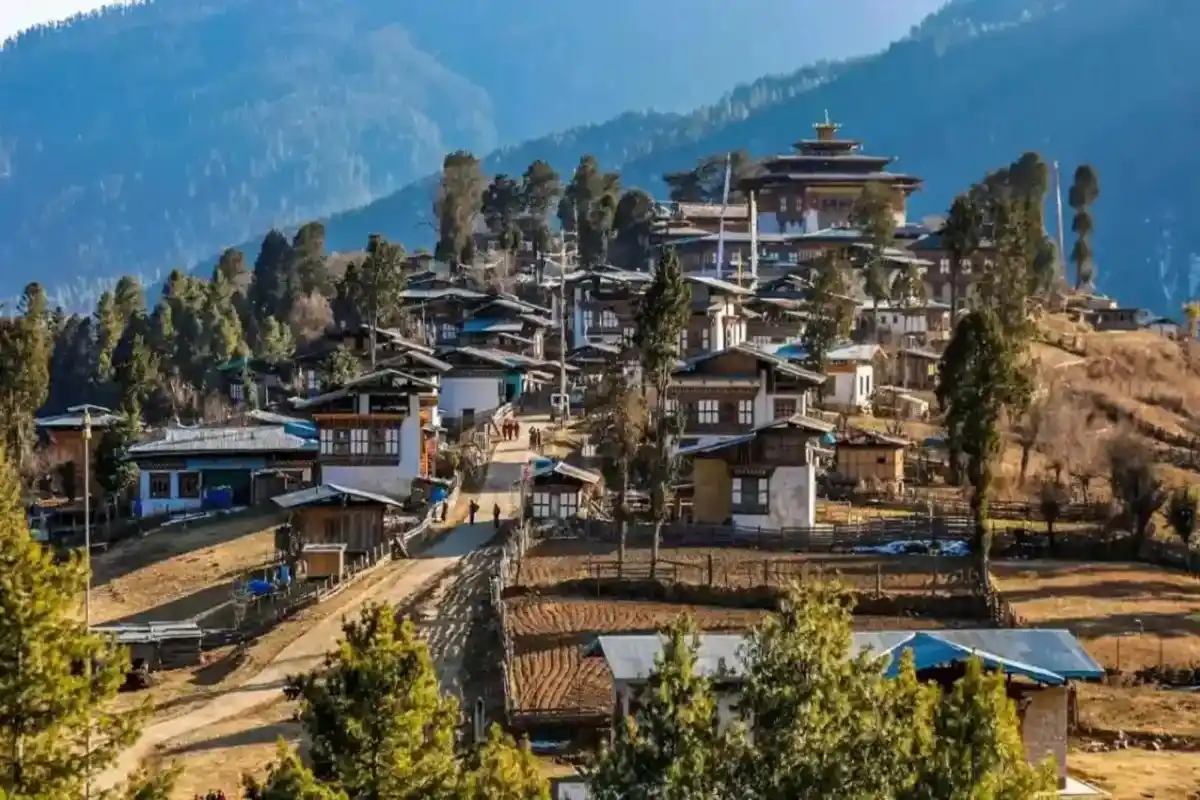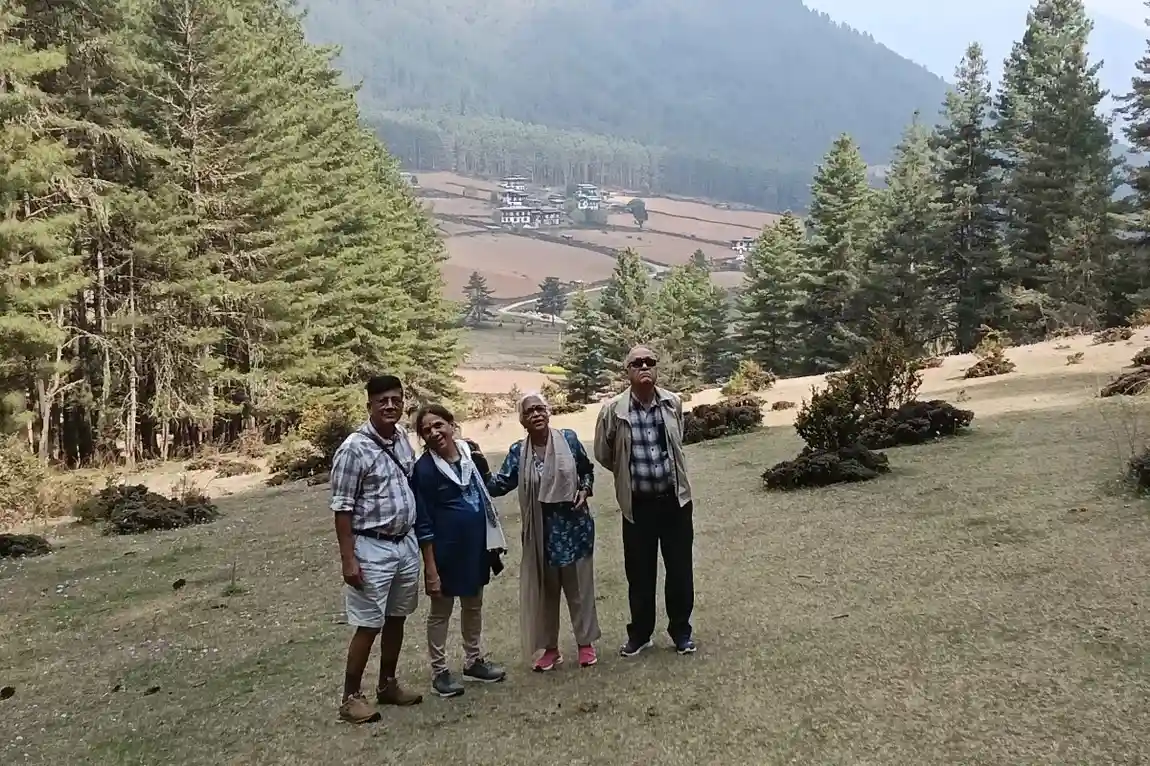Family Cultural and Outdoor Tour to Ura Valley - 7 Days
Our 7-day Family Cultural and Outdoor Tour to Ura Valley will give you a deep look into Bhutan’s unique cultural heritage. This great trip takes you to the special Ura Valley in Bhutan, where age-old customs meet amazing mountain scenes. Your family will learn about Bhutan’s culture by participating, joining traditional events, and connecting with the locals.
Highlights
- Cultural Sites
- Ura Yakchoe Festival
- Trip to the Mebar Tsho ( Burning Lake )
- Chance to experience hot stone baths
- Bhutan’s Traditional Food and National Costumes
- Experiencing the culture and meeting the people.
Trip Overview
On this Bhutan tour, you will see sacred temples, join in traditional ceremonies, go hiking through stunningly pure valleys, and enjoy the taste of ancient and modern farm-made foods. This Ura Valley tour offers chances for spiritual learning, cultural experience, or outdoor fun, so you won’t forget the time you spend here.
Explore the real beauty of Bhutan’s culture and nature during your unique Family Cultural and Outdoor Tour to Ura Valley. During this carefully organized 7-day journey, families explore spiritually, enjoy the outdoors, and gain memorable cultural experiences everyone will remember. Joining in ancient celebrations, picking up local trades, hiking through pretty valleys, and dining with the locals helps you appreciate the traditions and values of Bhutan. On the Ura Valley Bhutan tour, travelers experience more than usual tours because they can learn and grow through connections with a well-preserved culture. Reserve your Bhutan experience today and discover why the authentic cultural heart of Bhutan’s happiness emanates from the Ura Valley, alongside its rich traditions and stunning surroundings.
On this Bhutan tour, you will see sacred temples, join in traditional ceremonies, go hiking through stunningly pure valleys, and enjoy the taste of ancient and modern farm-made foods. This Ura Valley tour offers chances for spiritual learning, cultural experience, or outdoor fun, so you won’t forget the time you spend here.
Explore the real beauty of Bhutan’s culture and nature during your unique Family Cultural and Outdoor Tour to Ura Valley. During this carefully organized 7-day journey, families explore spiritually, enjoy the outdoors, and gain memorable cultural experiences everyone will remember. Joining in ancient celebrations, picking up local trades, hiking through pretty valleys, and dining with the locals helps you appreciate the traditions and values of Bhutan. On the Ura Valley Bhutan tour, travelers experience more than usual tours because they can learn and grow through connections with a well-preserved culture. Reserve your Bhutan experience today and discover why the authentic cultural heart of Bhutan’s happiness emanates from the Ura Valley, alongside its rich traditions and stunning surroundings.
Short Itinerary
Arrive in Bumthang, visit Jakar Dzong, and explore local villages.
Visit Kurjey Lhakhang and Tamshing Lhakhang, then take a gentle hike through the Ura Valley.
Spend the day with a local family, learning about traditional Bhutanese life, farming practices, and weaving
Take a scenic hike to Mebar Tsho (the Burning Lake) and enjoy a family picnic by the lake.
Explore Bumthang, visit the Bumthang Valley, and enjoy a cultural exchange with local villagers.
Head to Punakha, visit Punakha Dzong, and enjoy a boat ride along the river.
Return to Paro, visit Tiger’s Nest Monastery (Taktshang Goemba), and enjoy a family dinner before departure.
Price Includes
- Pick-up and drop-off services
We provide a pick-up service from the airport to the hotel on your arrival day and from the hotel to the airport on the departure day.
- Lunch, Breakfast, and Dinner
All meals during the trek will be provided by the company. However, personal food items like coffee, tea, cold drinks, etc, are not included in the package.
- A guide proficient in English
A certified, English-speaking guide will accompany you throughout the trip. The guide will offer information about the trail, culture, nature, and history, and ensure your safety and a smooth experience.
- Comfortable SUV vehicle
A private SUV will be used for road travel before or after the trek. These vehicles are ideal for Bhutan’s hilly terrain and provide a comfortable ride.
- All types of entry costs
This covers all permit fees, monument entrance fees, park fees, and any other official charges required for trekking or sightseeing activities during the tour.
- Professional Drive
We ensure a safe and smooth drive during your tour. We have licensed and experienced drivers for that.
- Sleeping bag and tent
Quality sleeping bags and tents are provided for your comfort and warmth during the camping nights on the trek. So, you don’t have to worry about buying a new one.
- Farewell dinner
A special farewell meal, typically arranged in a traditional restaurant, is offered at the end of the tour to celebrate the journey and thank the participants.
- Evening Tea/coffee with snacks
Each evening, you’ll be served tea or coffee along with light snacks like biscuits and popcorn.
- Drinking Water
Safe and clean drinking water is provided throughout the trek.
- Pick-up and drop-off services
We provide a pick-up service from the airport to the hotel on your arrival day and from the hotel to the airport on the departure day.
- Lunch, Breakfast, and Dinner
All meals during the trek will be provided by the company. However, personal food items like coffee, tea, cold drinks, etc, are not included in the package.
- A guide proficient in English
A certified, English-speaking guide will accompany you throughout the trip. The guide will offer information about the trail, culture, nature, and history, and ensure your safety and a smooth experience.
- Comfortable SUV vehicle
A private SUV will be used for road travel before or after the trek. These vehicles are ideal for Bhutan’s hilly terrain and provide a comfortable ride.
- All types of entry costs
This covers all permit fees, monument entrance fees, park fees, and any other official charges required for trekking or sightseeing activities during the tour.
- Professional Drive
We ensure a safe and smooth drive during your tour. We have licensed and experienced drivers for that.
- Sleeping bag and tent
Quality sleeping bags and tents are provided for your comfort and warmth during the camping nights on the trek. So, you don’t have to worry about buying a new one.
- Farewell dinner
A special farewell meal, typically arranged in a traditional restaurant, is offered at the end of the tour to celebrate the journey and thank the participants.
- Evening Tea/coffee with snacks
Each evening, you’ll be served tea or coffee along with light snacks like biscuits and popcorn.
- Drinking Water
Safe and clean drinking water is provided throughout the trek.
Price Excludes
- International Airfare
- Visa Charges and Insurance
- Individual expenditures
- Additional-day lodging
- Laundry and telephone expenses
- Tips for the guide and the porter
- International Airfare
- Visa Charges and Insurance
- Individual expenditures
- Additional-day lodging
- Laundry and telephone expenses
- Tips for the guide and the porter
Family Cultural and Outdoor Tour to Ura Valley Itinerary
Ura Valley adventure begins in Bumthang, whether you reach it by flying or by road. As soon as you step into Bumthang, pay a visit to the Jakar Dzong Fort to get great views over the valley. Wander with a local in and around Bumthang town to see how the traditional architecture fits nicely next to the modern way of life. Go to nearby craft stores offering woven products and check out cheese factories operating thanks to a project introduced by Swiss development work. You will get an evening introduction to plans and then share a traditional Bhutanese family dinner.
Start with Kurjey Lhakhang, which is considered a sacred site because Guru Rinpoche left his body’s mark on the rocks there. Move on to Tamshing Lhakhang, which was started by Pema Lingpa and contains ancient art and objects. You can begin your hiking trek in Ura Valley, and as you go, you have several opportunities to photograph beautiful views. Check out the Ura Lhakhang ancient temple and find out about its place in local religious activities. Take lovely pictures of the villages, fields, and yak grazing grounds, and speak to locals here who still preserve their history of cultivation in Yunnan’s pristine mountains.
Take part in genuine farming rites such as tending the soil, harvesting what’s grown, and caring for farm animals. Get to know the time-tested ways Bhutanese communities have farmed their land for years. Enjoy some cultural games, including trying out archery, Bhutan’s favorite sport, or the dart game khuru at festive events. Enjoy learning how to weave using wooden looms and make colors for your work using native plants and minerals. Gathering together in the evening with stories around the fire, sharing folklore tales, and having organic dinners from family gardens.
You might enjoy hiking to Mebar Tsho, also known as Burning Lake, because legend has it that Pema Lingpa discovered sacred items at this site. You’ll see wonderful forest views throughout the trail and have a chance to spot blue sheep and many bird species from the Himalayas. Understand both the legends and the religious meaning of Mount Chomolhari and its lake. Enjoy eating together by the water, as the children will be safe to walk around and discover the area. Head to where you are staying for a traditional hot stone bath, which uses heated river rocks and herbs to ease your tired muscles after a long day.
Check out additional sacred structures scattered around the Bumthang Valley because each one is special in its way. Join in at folk music and dance sessions and learn songs and moves that have been passed down through the years. Enjoy the impressive Gho and Kira outfits by having local specialists show you the proper way to wear each one. See where talented craftspeople weave beautiful cloth and shop for handmade souvenirs such as paper, wood items, and jewelry that support local artists.
You get to drive through thick forest and then over mountain passes, so you can take pleasure stops to see the lovely Himalayan mountains. You should visit Punakha Dzong, one of the country’s biggest fortresses, where two rivers flow together. Take photos from the big suspension bridge, appreciate the picturesque landscapes around you, and make it a fun outing for everyone. An optional boat ride or mild rafting may be enjoyed on the Mo Chhu, depending on weather and the family's choice. See Chimi Lhakhang, which serves as the fertility temple for Drukpa Kunley, and hear about the beloved saint’s unusual teachings and amusing legends.
This day starts with a hike to Tiger's Nest or Taktsang Monastery, which is located on a high cliff looking over Paro Valley. Climbing this medium difficulty route provides breathtaking views and presents itself as Bhutan's most famous landmark. One of the oldest in Bhutan, Kyichu Lhakhang marks the temple where, in the 7th century, Buddhists worked to overpower harmful demons in the Himalayas. Come to Paro town to purchase local handicrafts, textiles, and special foods. Say goodbye to your trip with a dinner of traditional dishes, a memorable performance, and lovely talks with your local friends here.
Know Before You Travel
-
March through May and September:
November through are the best seasons for your Ura Valley Bhutan tour. You’ll see blooming rhododendrons in spring and can enjoy clear views of the mountains; in autumn, the cool air and clear weather make photography easier. Frequent rains during summer tend to appear, but the area is filled with greenery and freshness. Winter in the mountains is exciting because there is less cloud cover, but also cold. A good idea is to visit during Buddhist festival months to take part in the spectacular Ura Yakchoe.
-
At Ura Valley:
Families can enjoy a real sense of Bhutanese culture, away from the many commercial destinations. In this remote region, old customs and nature, hardly changed by modernity, offer education to children and cultural help to adults. Adventures outside, connectivity with faith, and personal enrichment through culture combine to make the itinerary friendly for all ages. Since it is less crowded than many tourist spots, Ura Valley lets guests interact with Bhutanese people and capture stunning photos of their culture.
-
Cultural Sites:
Discover the spiritual history of Bhutan by visiting old monasteries and dzongs as you travel the Ura Valley. Head to Jakar Dzong, see the temple where Guru Rinpoche meditated, called Kurjey Lhakhang, and worship at the venerable Ura Lhakhang temple. You can find exceptional architecture and a deep spiritual connection to centuries of Buddhist culture at each of these sites.
-
Ura Yakchoe Festival:
If your holiday falls during the festival period, you’ll have the opportunity to see the lively Ura Yakchoe in Bhutan. People celebrate Tshechu by dancing in colorful masks, performing traditional music, and having group events, all of which give a real view of the culture. The festival brings joy and devotion to the scene, which attracts people from everywhere.
-
Trip to the Mebar Tsho ( Burning Lake ).:
See the enchanting Mebar Tsho, the Burning Lake, where legend says Pema Lingpa found sacred Buddhist artifacts. You’ll find remarkable scenery and significant religious value here. There is plenty of time for quiet thought and for taking photos as you discover the folklore and religions of Bhutan.
-
Chance to experience hot stone baths:
Take advantage of the serene tradition of a hot stone bath as a truly Bhutanese wellness experience. Getting into a river-stone heated bath with herbs is a great way to relax after crossing the country. Not only does this practice loosen your tight muscles, but it also links you to ancient healing methods used in Bhutan over many years.
-
Bhutan’s Traditional Food and National Costumes:
Taste the natural food of Bhutan, something local families make and eventually put on the national dress, such as the Gho for men and Kira for women. English School, in Asuza, invites you to enjoy ema datshi, paksha paa, and red rice to understand the methods and flavors unique to Bhutan’s cuisine.
-
culture and meeting the people:
Experience life alongside Bhutanese families, play their traditional games of archery and khuru, and try your hand at making woven and naturally dyed textiles. These meetings show you the customs and traditions that agencies often miss, allowing you to get to know the friendly Bhutanese well.
Family Cultural and Outdoor Tour to Ura Valley
FAQs for Family Cultural and Outdoor Tour to Ura Valley
March to May in spring and September to November in autumn provide the most enjoyable weather for families to travel. Both spring and autumn are great times to visit, as there are flowers in the first season and clear views and easy hiking in the second. Due to steering clear of the monsoon and bitter winter temperatures, the seasons make being outside fun for kids.
All age groups are comfortable on this trip because we offer flexible movements and optional activities. Tourists do not need to go far hiking, and if you cannot hike for kilometres, we can find you alternative transport. Cultural activities in the city are open to everyone in the family, and guides are skilled at making storytelling and hands-on activities enjoyable for children.
Don’t forget to pack clothes that fit the weather, hiking shoes that feel good on your feet, rain gear, protection from the sun, and your medicines. Detailed packing lists for all travel seasons are sent after a booking is made. Participants are given traditional items to wear for cultural activities, and all outdoor equipment is included in the offer.
When in temples, you should take off your shoes, avoid pointing your feet at the altar, and act quietly and politely. Some religious sites allow only certain types of photography, and our guides will tell you how to behave. Cover your shoulders and knees when you visit places of worship, and always ask if it’s okay to photograph anyone before you do.
Bhutan homestays use traditional homes and provide modern toilets, along with comfortable sleeping arrangements. Sharing meals and living spaces gives families a chance to learn about the customs of the community. You will be respected for your privacy while meeting and interacting with families who are chosen for their kindness and basic English.
With enough warning, our kitchen can make food for vegetarians, vegans, and most people with dietary needs. Most of the food present in Bhutan is vegetarian, as well as specialized meals can be prepared by our local partners if you have dietary restrictions. It is suggested to mention your allergies and dietary restrictions while you're booking the trip.
If the weather stops outdoor trips, other cultural experiences inside are scheduled. If conditions change, you can reschedule with ease, and guides will find fun replacements that keep your experience worthwhile and informative. The focus of activity planning is always to ensure safety.
The steady uphill sections to Tiger's Nest may take almost 3 hours, and if anyone is unable to walk the full hike, they can still take another path while enjoying the full view, and even horses are available for some of the hike towards the destination. Seeing the highlights and gaining spiritual memories gives most people a good reason to climb.
The national language is Dzongkha, but many Bhutanese also speak English.
Yes, all licensed guides are fluent in English and sometimes other languages as well.
Most signs and maps intended for tourists are written in English.
It's not necessary, but learning a few basic phrases is appreciated by locals.
Your guide will handle communication, so language barriers are minimal.
You need a visa and all necessary permits for your trip. These documents can not be received on the day of your arrival, so they must be processed before coming here. After you book a trip with us, we will manage these papers for you. Your Bhutan visa is arranged by Orrog as part of the package.
The main way to come to Bhutan is through Paro International Airport, which is well-connected to cities like Bangkok, Delhi, Kathmandu, and Singapore. Most people arrive by air, but if you plan to come via road, you can enter through Phuentsholing, located on the southern border with India, which is the most commonly used entry point.
It is recommended to apply for the visa at least 20 days before your planned departure date so that there is enough time for processing your Bhutan visa, finalizing your itinerary, and arranging your guides and transportation. Although visa processing itself is relatively fast once payment is received, early preparation helps avoid delays and ensures availability, especially during peak seasons (spring and autumn).
You don’t require a passport-size photo for the visa, but it is wise to carry at least 2–4 recent passport-sized photographs during your trip. These may be needed for local permits, registration, or when applying for a local SIM card upon arrival in Bhutan.
Yes, you can lengthen your stay in Bhutan either before or after your trip. Bhutan’s tourism model requires visitors to pay a Sustainable Development Fee (SDF) and a daily package cost, so any extra days will involve additional charges. Extensions are a great opportunity to explore cultural sites in Paro, Thimphu, or even add another short trip or day hike.
Yes, Bhutan requires full tour payment in advance before your visa can be processed and issued. The government of Bhutan regulates this policy to ensure that all travel arrangements are confirmed through a licensed Bhutanese tour operator. We are a licensed tour operator that ensures you have everything you need for a trouble-free trip.
Any personal expenses are not covered in the package like:
- Tips for your guide and other staff
- Bottled drinks and snacks(personal expense)
- Souvenirs or local crafts
Credit cards are easily accepted in major cities like Paro and Thimphu. But in remote areas, you may not have access to a card or an ATM. So, it is best to carry some cash before heading for the trip.
Tipping is not mandatory, but it is a widely appreciated gesture and a customary way to show gratitude for good service. The tipping guideline would be to give USD 5-10 per day as a tip for the guides and other staff
Paro International Airport is the only international airport in Bhutan. It is well connected by flights from cities like Bangkok, Delhi, Kathmandu, and Singapore.
Yes, airport pick-up and drop-off are included in the package. We will have your guide and driver meet you at the airport and transport you to your hotel.
While Bhutan's roads are mostly paved, some parts are narrow, winding, and occasionally affected by weather. However, we ensure your travel is safe, well-maintained, and driven by an experienced professional throughout the journey.
Once you arrive in Paro, we will arrange private ground transportation to the starting point as we pass through lush valleys and traditional villages. So, you don’t have to worry about any transportation services.
Yes, it is very safe to travel even with children in Bhutan. Roads are well-maintained, and the pace of travel is generally relaxed and child-friendly.
We will usually travel in comfortable, private vehicles with experienced drivers. All ground transportation is included in your package.
The Bhutanese Ngultrum is used in Bhutan. All local transactions during the trip will be in BTN.
US Dollars (USD) are generally accepted at larger hotels, souvenir shops, and tour operators, particularly in Paro and Thimphu. However, it’s advisable to convert your currency to BTN for general purchases in rural areas. Other currencies like the Euro or the Pound are not commonly accepted directly.
No, credit or debit cards are not accepted on the trip, as it takes you through remote regions with no banking or electronic payment access. All trip-related payments like accommodation, meals, permits, etc, are paid in advance.
You can exchange foreign currency at the Paro International Airport, at banks, or through licensed money changers in cities like Thimphu and Paro. It's best to exchange enough cash before heading out on the trip.
To greet people, you can greet with locals “Kuzu zangpo la” (Hello) by performing a slight bow. Most common greetings include physical greetings, such as shaking hands less visible, especially in rural areas.
Yes, but remember to seek permission, especially when taking photos of monks, locals, or temples. Please note that clicking photos is not allowed at most religious sites.
Visitors should dress modestly and respectfully. This means:
- Covering shoulders and knees
- Removing hats and sunglasses
- Not wearing shorts or sleeveless tops
This applies to both men and women.
Yes, Bhutanese society is deeply rooted in Buddhism and tradition. Here are some key taboos:
- Do not point your feet at people or sacred objects
- Never touch anyone on the head, as it is considered sacred
- Walk clockwise around temples, stupas, and religious monuments
- Avoid public displays of affection
While gifts are not expected, they may be accepted graciously if given with respect. It is advisable to consult with the guide before giving out anything.
Bhutan typically uses Type C, Type D, and Type G electrical outlets. Standard safe voltage is 230V and frequency is 50Hz; therefore, ensure that your equipment is compatible with this voltage.
Indeed, it is highly advised to take along a universal travel adapter, particularly one to fit a variety of types of plugs, because plugs can be different in a hotel or a guesthouse.
Bhutan follows Bhutan Time (BTT), which is UTC/GMT +6 hours. This time zone remains consistent throughout the year.
No, Bhutan does not observe daylight saving time. The country maintains the same time year-round.
Bhutan is 30 minutes ahead of India. For example, 12:00 PM in India is 12:30 PM in Bhutan.
Yes, souvenirs can be bought in Paro or Thimphu before or after the trip.
Some popular souvenirs include hand-woven textiles (kira and gho fabric), prayer flags, thangka (religious scroll) paintings, handmade paper products, traditional masks, and Buddhist artifacts.
You can do some gentle bargaining in local street markets. However, in government-run shops and fixed-price stores, prices are usually non-negotiable.
Yes, you can easily purchase a SIM card upon arrival in Bhutan. We will assist you with the process, and you'll need a passport copy and a passport-sized photo.
No, internet access is not available during the trip. However, Wi-Fi is available in hotels in Paro and Thimphu before and after the trip.
B-Mobile (by Bhutan Telecom) and TashiCell are the two main service providers. B-Mobile tends to have better coverage in rural and mountainous areas
Since the weather can be unpredictable and temperatures can vary drastically, layered clothing is essential. You should pack:
- Base layers (thermal tops and bottoms)
- Insulating layers like fleece or down jackets
- Waterproof and windproof outer layers
- Warm hats, gloves, and neck gaiters for freezing conditions
- Moisture-wicking socks and weatherproof trekking boots
Nighttime temperatures can be extremely cold, especially at high-altitude places. So you need to have enough clothing to keep you warm.
The weather is clear with mild daytime temperatures during spring and autumn.
Tsechu is a religious festival held in honor of Guru Rinpoche, featuring mask dances, rituals, and traditional performances. It's a colorful and spiritual experience for all ages.
Yes, festivals are family-friendly and offer a unique cultural experience for children, although large crowds can be overwhelming for very young kids.
Modest, respectful attire is recommended. Traditional Bhutanese dress (Gho/Kira) is encouraged and can be arranged for you.
Yes, all tours include certified, English-speaking guides who are knowledgeable in Bhutanese history and culture.
You can learn about the Bhutanese culture through local interactions, homestay visits, cooking classes, traditional art workshops, and attending local festivals and religious ceremonies.
Reviews & Ratings
-
Guarantee -
Thimphu,Bhutan -
975+17160228
Ready to Explore Bhutan?
Start your journey today and discover the magic of Bhutan with our expert guides and carefully crafted tours.
Book This Trip
-
No booking or credit card fees -
Best price guarantee -
Full customize trip
Ask a Question
Feel free to ask us anything about this tour. A travel expert will then get back to you as soon as possible
Ready to Explore Bhutan?
Start your journey today and discover the magic of Bhutan with our expert guides and carefully crafted tours.
